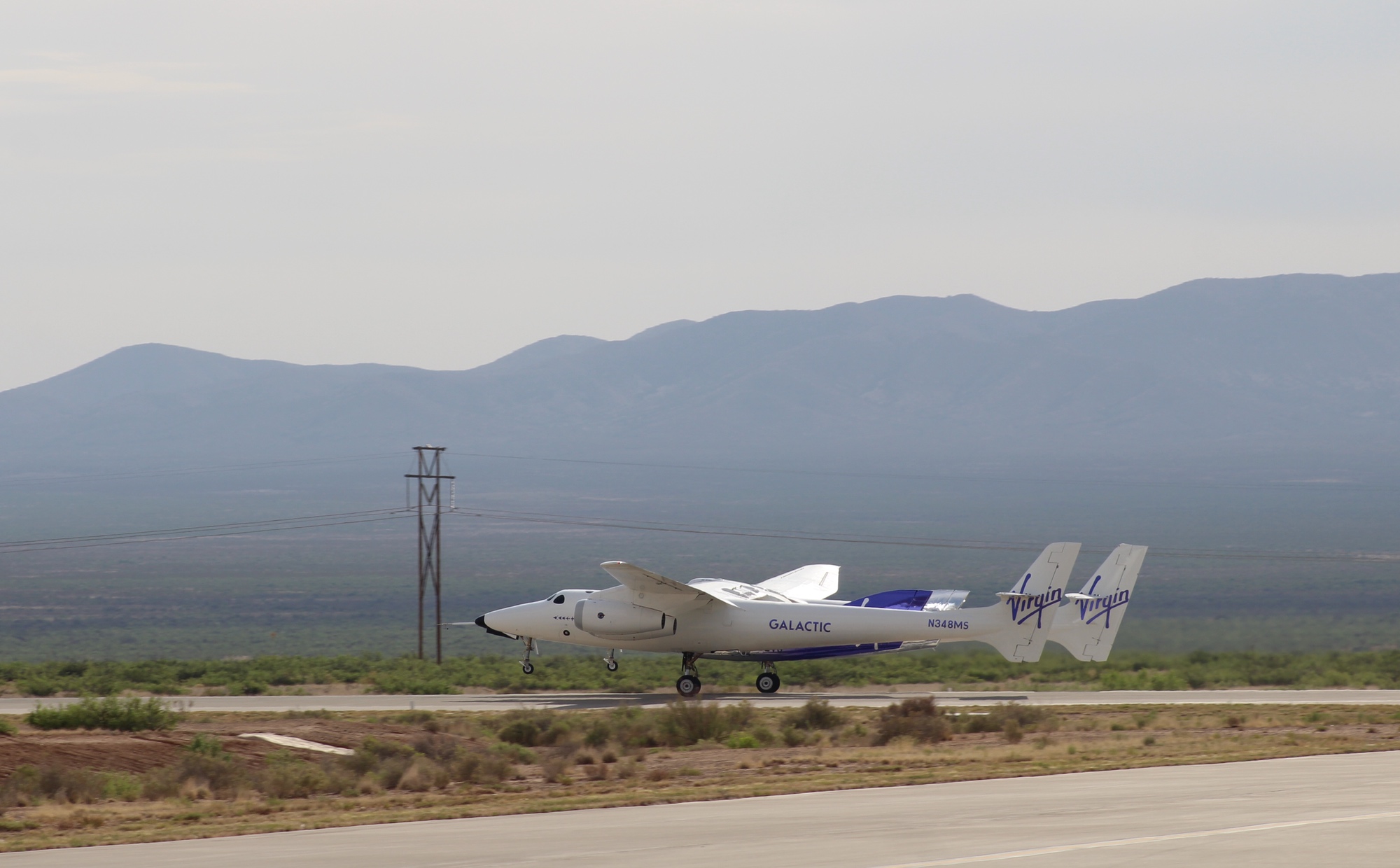SPACEPORT AMERICA, N.M. — Virgin Galactic’s VSS Unity spaceplane conducted its final commercial mission June 8, taking a Turkish researcher and three private astronauts on a suborbital spaceflight.
VSS Unity, attached to its VMS Eve mothership aircraft, took off from Spaceport America in southern New Mexico at 10:31 a.m. Eastern. Unity released from Eve at 11:26 a.m. Eastern, flying its typical suborbital trajectory to an altitude of 87.5 kilometers before gliding to a landing back at the spaceport at 11:41 a.m. Eastern.
Galactic 07 featured a Turkish research astronaut, Tuva Atasever. His flight was arranged through Axiom Space, which flew another Turkish astronaut, Alper Gezeravcı, on the Ax-3 private astronaut mission to the International Space Station in January. Atasever was the backup for that mission.
Atasever planned to conduct seven experiments during the suborbital flight. The vehicle also carried a rack with automated payloads from Purdue University to study propellant slosh in microgravity and from the University of California Berkeley to test 3D printing. Those payloads were flown through NASA’s Flight Opportunities program.
The other three customers were private astronauts, whose identities were disclosed by Virgin Galactic only after the vehicle landed. They were
- Andy Sadhwani, a principal propulsion engineer at SpaceX who previously did research at NASA and Stanford University;
- Irving Pergament, a New York real estate developer and private pilot; and
- Giorgio Manenti, an Italian investment manager living in London.
Unity was commanded by Nicola Pecile, making his fourth flight, with Jameel Janjua, on his first spaceflight, as pilot.

This was the seventh commercial flight for VSS Unity and the 12th flight overall. It will also be the last for VSS Unity, the second SpaceShipTwo vehicle built for Virgin Galactic, as the company shifts its focus to completing work on the new Delta series of vehicles.
“This is the final flight for Unity, but that’s not the end of the story,” Mike Moses, Virgin Galactic spaceline president, told reporters at the spaceport June 7. “A whole new chapter is about to start with us.”
The company announced last November it would retire Unity by the middle of 2024 so that could conserve its cash, about $1 billion at the time, to complete work on the Delta class of vehicles, which promise much higher flight rates and lower operating costs required for the company’s business case to close.
The Delta-class vehicle will look “exactly the same” as Unity, Moses said. “But the real change is what’s under the hood, so to speak, in how it was designed, how it was built and how it’s operated.”
“We want to take advantage of all the maturation work that has been done on the Unity spaceship for Delta,” said Steve Justice, senior vice president of spaceline programs and engineering at Virgin Galactic. “We only want to invent that which really need to invent.”
That invention primarily involves use of different composite materials and manufacturing techniques to enable production of vehicles at higher rates and lower costs. There is also a greater reliance of contractors to build key elements of the vehicle, which Virgin Galactic will then assemble at a new facility in Mesa, Arizona, near Phoenix.
Moses said components for the first two Delta-class vehicles will start arriving at the Arizona facility late this year and early next year, where Virgin will perform final assembly and ground tests. The company plans to start flight tests in late 2025 and begin commercial service in 2026.
“Unity broke ground and demonstrated what is possible,” he said. “Delta is going to be revolutionary.”

“It is kind of sad to see Unity fly on its last commercial flight,” acknowledged Pecile in remarks after landing, noting this flight took place almost exactly 20 years after Unity’s predecessor, SpaceShipOne, made its first flight. “But our efforts are really working on the next generation.”
In attendance for Galactic 07 was Richard Branson, founder of Virgin Galactic who flew on Unity in July 2021. He said after the flight he was still committed to the company’s vision of enabling “thousands and thousands of people” to experience spaceflight.
“That’s the aim of Virgin Galactic. Other people have aims of going to Mars, which is equally absolutely and utterly extraordinary,” he said. “But what we want to do is enable many people to experience what our astronauts experienced today.”
Related
Read the original article here
